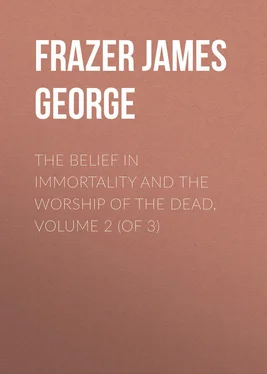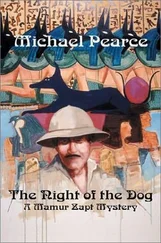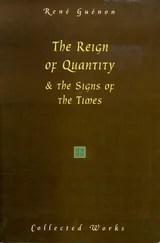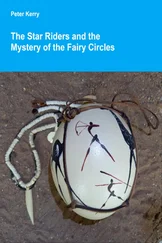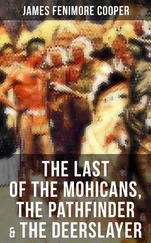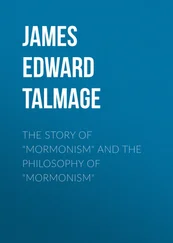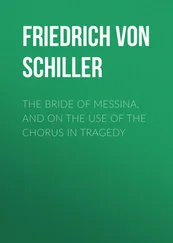James Frazer - The Belief in Immortality and the Worship of the Dead, Volume 2 (of 3)
Здесь есть возможность читать онлайн «James Frazer - The Belief in Immortality and the Worship of the Dead, Volume 2 (of 3)» — ознакомительный отрывок электронной книги совершенно бесплатно, а после прочтения отрывка купить полную версию. В некоторых случаях можно слушать аудио, скачать через торрент в формате fb2 и присутствует краткое содержание. Жанр: foreign_antique, foreign_prose, на английском языке. Описание произведения, (предисловие) а так же отзывы посетителей доступны на портале библиотеки ЛибКат.
- Название:The Belief in Immortality and the Worship of the Dead, Volume 2 (of 3)
- Автор:
- Жанр:
- Год:неизвестен
- ISBN:нет данных
- Рейтинг книги:3 / 5. Голосов: 1
-
Избранное:Добавить в избранное
- Отзывы:
-
Ваша оценка:
- 60
- 1
- 2
- 3
- 4
- 5
The Belief in Immortality and the Worship of the Dead, Volume 2 (of 3): краткое содержание, описание и аннотация
Предлагаем к чтению аннотацию, описание, краткое содержание или предисловие (зависит от того, что написал сам автор книги «The Belief in Immortality and the Worship of the Dead, Volume 2 (of 3)»). Если вы не нашли необходимую информацию о книге — напишите в комментариях, мы постараемся отыскать её.
The Belief in Immortality and the Worship of the Dead, Volume 2 (of 3) — читать онлайн ознакомительный отрывок
Ниже представлен текст книги, разбитый по страницам. Система сохранения места последней прочитанной страницы, позволяет с удобством читать онлайн бесплатно книгу «The Belief in Immortality and the Worship of the Dead, Volume 2 (of 3)», без необходимости каждый раз заново искать на чём Вы остановились. Поставьте закладку, и сможете в любой момент перейти на страницу, на которой закончили чтение.
Интервал:
Закладка:
This account seems to imply that the spirits which took the form of these animals, birds, and fish were believed to be the souls of the dead returning from the spirit world to revisit their old homes on earth. But even if we suppose that herein the writer was mistaken, and that, as Mariner affirmed, only the original and superior gods were deemed capable of incarnation in animal shape, the account is still valuable and interesting because it calls attention to a side of Tongan religion on which our principal authority, Mariner, is almost silent. That side comprises the worship of natural objects, and especially of animals, birds, and fish, regarded as embodiments of spirits, whether gods or ghosts. This worship of nature, and particularly of animated nature, was highly developed among the Samoans; it would be natural, therefore, to find the same system in vogue among their neighbours and near kinsmen the Tongans, though our authorities on Tongan religion say little about it. The system may with some appearance of probability be regarded as a relic of a former practice of totemism. 237 237 See below, pp. 182 sqq. , 200 sqq.
In recent years a considerable amount of evidence bearing on the subject has been collected by Mr. E. E. V. Collocot. He distinguishes the national Tongan gods from the gods of tribes, clans, and small groups of allied households; such a group of households, it appears, formed the ordinary social unit. Indeed, he tells us that there was nothing to prevent a man from setting up a tutelary deity of his own, if he were so disposed; he might adopt almost any object for the religious reverence of his household and himself. Thus there was "a gradation in the divine hierarchy from gods of populous tribes down to deities the private possession of a very few." 238 238 E. E. V. Collocot, "Notes on Tongan Religion," Journal of the Polynesian Society , xxx. (1921) pp. 154 sq. , 159.
Further, Mr. Collocot found that most of the gods had sacred animals or other natural objects associated with them, 239 239 E. E. V. Collocot, op. cit. pp. 160, 161.
and that the worshippers were generally forbidden to eat the sacred animals of their gods. He concludes that "in the period of which we have information totemism has given way to a more highly developed polytheism, but there are indications that the development was by way of totemism." 240 240 E. E. V. Collocot, op. cit. pp. 159 sq.
Among the facts which appear to support this conclusion we may note the following.
There was a great god called Boolotoo Katoa, that is, "the whole of Boolotoo (Bolotoo)," who had the dog for his sacred animal; while the deity was being worshipped, a dog lay at the side of the priest. This god had his principal shrine at Boha in the eastern part of Tongataboo: the district was of old the centre of government and the residence of the Tooitonga. 241 241 E. E. V. Collocot, op. cit. p. 162.
Another god, whose name was the King of the tribe or clan of Fonua ( Tui-Haafakafonua ), had for his sacred animal a lizard, and for the convenience of his departure, and presumably arrival, a tree or post was always provided for him to crawl along. A handy post or tree-stump was a regular part of his temple furnishings. 242 242 E. E. V. Collocot, op. cit. p. 227.
Another god, whose name signifies "Proud Boastfulness of the Season" ( Mofuta-ae-ta'u ), had for his sacred animal a great sea-eel, which dwelt in an opening of the reef opposite the village. This deity used to take it very ill if anybody appeared on the beach near his abode wearing a turban or whitened with lime; and should a man rashly disregard the feelings of the divine eel in these respects, it was believed that the deity would carry him off to his hole in the rock. 243 243 E. E. V. Collocot, op. cit. pp. 227 sq.
Another god, named Haele-feke, used to manifest himself in the form of an octopus ( feke ). Whenever an octopus appeared in a certain pool, it was at once recognised as the god, and the priestess immediately went and awaited him at the shrine, which seems to have been a small raised platform. Thither the people presently resorted, bringing bunches of coco-nuts and coco-nut leaves and earth. The priestess thereupon spoke as in the person of the octopus, and apparently imitated the creature, presumably by sprawling in the ungainly manner of an octopus. The worshippers of this deity abstained from eating the flesh of the octopus, and even from approaching a place where other people were eating it. If any of them transgressed the taboo, he was afflicted with complete baldness. Should any of the worshippers find a dead octopus, they buried it with all due ceremony in Teekiu, their principal village. 244 244 E. E. V. Collocot, op. cit. pp. 231 sq.
The rail bird ( kalae ) was worshipped by some people, who used to tie bunches of the birds together and carry them about with them when they travelled; and the priest had a bunch of the sacred birds tattooed as a badge on his throat. 245 245 E. E. V. Collocot, op. cit. pp. 161, 233.
The clan Fainga'a had for its sacred animal the mullet; and it is said that young mullets were tabooed to the men of the clan. 246 246 E. E. V. Collocot, op. cit. p. 234.
A family group in Haapai had the owl for their sacred creature; if an owl hooted near a house in the afternoon, it was a sign that there was a pregnant woman in the household. 247 247 E. E. V. Collocot, op. cit. p. 234.
The god of Uiha in Haapai was the Eel-in-the-Open-Sea ( Toke-i-Moana ); as usual, the worshippers might not eat the flesh of eels or approach a place where an eel was being cooked. 248 248 E. E. V. Collocot, op. cit. pp. 234 sq.
The clan Falefa worshipped two goddesses, Jiji and Fainga'a, whose sacred creature was the heron. Jiji was supposed to be incarnate in the dark-coloured heron, and Fainga'a in the light-coloured heron. When a pair of herons, one dark and the other light-coloured, were seen flying together, people said that it was the two goddesses Jiji and Fainga'a. 249 249 E. E. V. Collocot, op. cit. p. 232.
In the island of Tofua there was a clan called the King of Tofua ( Tui Tofua ), which had the shark for its god; members of the clan might not eat the flesh of sharks, because they believed themselves to be related to the fish; they said that long ago some of the clansmen leaped from a canoe into the sea and were turned into sharks. 250 250 E. E. V. Collocot, op. cit. pp. 238 sq.
Another god who appeared in the form of a shark was Taufa of the Sea ( Taufa-tahi ); but in another aspect he was a god of the land ( Taufa-uta ) and a notable protector of gardens. To secure his aid the husbandman had only to plait a coco-nut leaf in the likeness of a shark and to hang it up in his plantation; a garden thus protected was under a taboo which no one would dare to violate. A Christian, who ventured to thrust his hand in mockery into the maw of the sham shark, had both his arms afterwards bitten off by a real shark. 251 251 E. E. V. Collocot, op. cit. p. 229.
Other gods were recognised in the shape of flying-foxes, shell-fish, and little blue and green lizards. 252 252 E. E. V. Collocot, op. cit. pp. 230, 231, 233.
We hear of two Tongan gods who had black volcanic pebbles for their sacred objects, 253 253 E. E. V. Collocot, op. cit. pp. 230, 233.
and of one whose shrine was the tree called fehi , the hard wood of which was commonly used for making spears and canoes. 254 254 E. E. V. Collocot, op. cit. p. 232.
The gods of Niua Fo'ou, one of the most distant islands of the Tongan group, were three in number, to wit, the octopus, pig's liver, and a large lump of coral. The worshippers of the two former deities might not eat the divine octopus and the divine pig's liver. 255 255 E. E. V. Collocot, op. cit. p. 239.
Christianity itself appears not to have wholly extinguished the reverence of the natives for the sacred animals of their clans. A much-respected native minister of the Methodist Church informed Mr. Collocot that to this day he gets a headache if he eats the sacred animal of his clan, though other people may partake of the creature, not only with impunity, but with relish. 256 256 E. E. V. Collocot, op. cit. p. 160.
Интервал:
Закладка:
Похожие книги на «The Belief in Immortality and the Worship of the Dead, Volume 2 (of 3)»
Представляем Вашему вниманию похожие книги на «The Belief in Immortality and the Worship of the Dead, Volume 2 (of 3)» списком для выбора. Мы отобрали схожую по названию и смыслу литературу в надежде предоставить читателям больше вариантов отыскать новые, интересные, ещё непрочитанные произведения.
Обсуждение, отзывы о книге «The Belief in Immortality and the Worship of the Dead, Volume 2 (of 3)» и просто собственные мнения читателей. Оставьте ваши комментарии, напишите, что Вы думаете о произведении, его смысле или главных героях. Укажите что конкретно понравилось, а что нет, и почему Вы так считаете.
